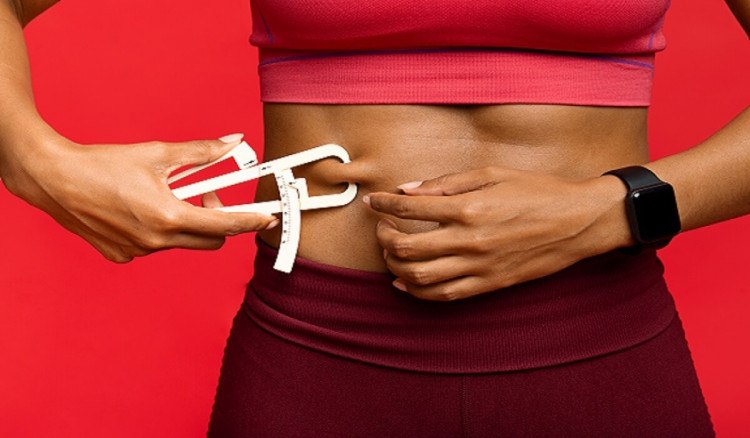
Effective Exercise and Diet Tips for Managing Diabetes
It is easier said than done: eat healthy foods…control your blood glucose levels…get plenty of exercise. If it were that easy, we wouldn’t have an epidemic of obesity in the world. You know the reality: food that’s bad for you tastes good. And exercise, which is good for you, is hard work. But the truth is, if you have diabetes, you have to take the best care of yourself as you an. So how do you eat the right foods, get enough exercise, and keep your blood glucose levels in balance all at the same time? There is no simple answer that will work for everyone.
If you have type 1 diabetes, you probably don’t have to lose weight. But you do have to develop a meal plan and follow that plan to balance your food intake with your insulin schedule and physical activities. If you have type 2 diabetes, you have probably been told two things: losing weight will help you achieve better glucose control by reducing insulin resistance, and it will also help prevent many of the complications of diabetes.
That’s true. So not only do you have to balance your food intake to match your physical activity and perhaps insulin or oral medication but you also have to try to lose weight. And on top of all that, you’re supposed to exercise too. It may seem like too much to handle. Maybe you’ve tried before and found it overwhelming, so you just gave up. Or maybe you have already gotten on track with healthy eating habits, but you just need to learn how to fine-tune your plan.
Whatever your reasons for wanting to eat better, it is important to keep one thing in mind. Healthy living for someone with diabetes is not any different from that for someone without diabetes. You need to first set your goals and decide what you ultimately want to achieve. Do you want tight control? Or you want something that gives you more leeway? Do you want to lose weight, or are you happy with your current weight? How much exercise do you want to incorporate into your daily routine?
The next step is to meet with a dietitian and perhaps an exercise specialist to figure out the best way to put your plan into action. In developing a plan to reach your goals, make sure your goals are realistic and that you take a path toward reaching those goals that suits you. Maybe you are the type of person who likes to go cold turkey and start right away with your bigger goal. Or maybe you really would do better if you broke down your bigger goals into smaller, more manageable steps. Whatever your style, the key is to work with the members of your health care team to develop a healthy living plan that works for you.
DIABETES EXERCISE AND DIET TIPS
Setting Goals For Diabetes Eating and Exercise
Whatever your goal, there is good news. You don’t have to go on a crash diet and you don’t have to make a whole bunch of changes at once. Your goal is to develop new lifestyle habits that you can follow for the rest of your life. It may not happen overnight. The key is to set realistic goals that you can reach. Don’t set goals you know you can’t achieve, because you will set yourself up for failure. And work toward those goals over time. Take small steps at first, and eventually you may find that you can change the way you live.
You may want to set new goals for healthy living if one or more of the following statements is true:
- You are recently diagnosed with diabetes
- You are not happy with your blood glucose control
- You are experiencing frequent bouts of hypoglycemia or hyperglycemia
- You have noticed any worsening of your complications or blood glucose control
- Your glycated hemoglobin measurement is higher than desirable
- You are becoming more insulin resistant
- You experience any other changes in your feelings of wellbeing
What You Should Do For Good Diabetes Exercise
First, assess where you are. Start with those aspects of your general health that are important to you. You might start with your weight, your blood glucose levels, your cholesterol level, or your exercise level, for example. Think about where you are now and where you want to be. Do you want to improve your blood glucose control? What blood glucose levels are reasonable for you? Do you want to practice tight control? Or would it be more reasonable for you to just shoot for blood glucose levels between 90 and 180? Do you want to start exercising more? Would you like to run a marathon, or would you just be happy if you could walk around the block? Would you like to lose weight? How much? All your excess weight, or just enough, say 10%, to improve your insulin resistance?
In setting goals, it is important to be realistic. Are you the type of person who likes to exercise? Will it be easy for you to cut back on the fat or the number of calories in your meal plan? Do you rise to the challenge of hard-to-reach, long-term goals? Or would you have more success with smaller, more attainable goals? If you spend some time now thinking about what would work best for you, you’ll probably have more success achieving your goals.
Diabetes Weight Goals
If you are overweight, why is losing weight so important? Other than genetics, the biggest risk factor for developing type 2 diabetes is obesity. A full 80% of people with type 2 diabetes are obese. By medical standards, being obese means weighing more than 30% of your ideal body weight. In contrast, most people with type 1 diabetes are of normal weight. If you have type 2 diabetes and you are overweight, the best thing you can do is try to shed some weight.
Many people with type 2 diabetes find that losing weight helps to restore insulin sensitivity and makes blood glucose levels easier to control. You don’t even have to lose all your extra weight. Many people find that losing just 5% to 10% of their total weight is enough to see improvements in managing their diabetes. That means if you weigh 90kg, losing 5kg to 10kg could improve your blood glucose control, blood pressure, and cholesterol levels and reduce the risk of heart disease.
Just why being overweight triggers diabetes is not known for sure. But scientist do know that when you eat more than your body needs, you store the extra energy in your fat cells as triglycerides, a form of fat. As you store more body fat, the size and number of fat cells increases. For some reason, having too much fat, especially if your fat reserves are distributed more on your upper body, diminishes your body’s ability to use insulin.
When your body can’t use insulin as it should, you have insulin resistance. At the same time, carrying too much extra fat places a burden on your pancreas and it can’t make enough insulin. If you get rid of some of your extra body fat, then you can increase your insulin sensitivity. That means your body can use insulin better, and your pancreas may be able to make more.
Your doctor can help you decide what a healthy weight for you should be. You and your doctor will probably consult certain tables and formulas devised by the government, health insurance companies and health experts. These tables are based on scientific studies that suggest that carrying too much weight increases the risk of certain diseases, such as heart attack, stroke, diabetes, and early death. Not all studies agree on what weight is ideal for reducing the risk of disease. But there is a general consensus that if you keep your weight within a certain range, your chances of remaining healthy are improved. Remember these weights are not absolutes, but rather guidelines as to what a healthy weight could be.
Diabetes Blood Glucose Goals
The goal for many people with diabetes is to maintain blood glucose levels as close to normal as possible. Your goals will be individualized for you, but if you have diabetes, the American Diabetes Association (ADA) recommends target blood glucose levels of 80-120mg/d before meals and 100-140mg/dl at bedtime.
Does this mean you should strive for the same levels? Maybe. Or maybe these goals are not realistic for you. For example, these goals may not be appropriate for someone at risk for hypoglycemia. If you are elderly or live alone, keeping your blood glucose too low may put you at risk for hypoglycemia. Small children should probably not strive for these goals either, because they do not always recognize the symptoms of hypoglycemia. A more appropriate goal for children may be in the range of 100-120mg/dl. It is important to meet with your health care team to set your own personal goals.
A good place to begin is to see where you are now. Monitor your blood glucose level before each mean and 2 hours after and record your results. Do this for a week to make sure they are consistently within the same range. This tells you where you are now. How close are you to the goals recommended by the ADA?
Now write down an acceptable range of goals that you would like to strive for. Your own personal goals should take into account your age, activity level, lifestyle, overall health, and motivation level. Do you want to practice intensive control, for example, to achieve near-to-normal blood glucose levels? This requires a significant effort, but the rewards are substantial. Do you have the time to devote to this? Or is your lifestyle too demanding to allow monitoring 7 times a day? Are you willing to risk a greater chance of diabetes complications to follow a more moderate blood glucose control program?
If your blood glucose levels are not well controlled now, it may simply be too much to expect to get them consistently below 120 or 140mg/dl. Maybe, for now at least, it would be more realistic to try to keep them within the range of 70 to 200mg/dl. This may be an achievable goal for you. Then as time goes on and you learn to manage your diabetes, you may find that you could shoot for blood glucose levels between 70 and 175mg/dl. Whatever you and your doctor decide, it is better to have a goal that is achievable than no goals at all or goals that are impossible to attain.
Diabetes Fitness Goals
Whether you are a fitness fanatic or a couch potato, you are probably well aware that exercise is good for you. You probably know that exercise can help you lose weight and that it is good for your heart. But did you also know that if you exercise regularly, you may lower your blood glucose levels and improve your insulin sensitivity?
Over time, regular exercise will also bring down your glycated hemoglobin levels. This is especially true if you have type 2 diabetes. Not only does exercise burn up calories, it can also lower triglyceride levels, increase HDL (the “good cholesterol”) levels and improve circulation, an important consideration for someone with diabetes. This is because the most devastating complications of diabetes develop from poor circulation.
Some people are miserable without a 5-mile run every day. But for others, a 5-yard walk to the refrigerator is a major effort. Most likely, you fall somewhere in between. Unfortunately, many sedentary people know that exercise is good for them, and maybe have even tried it, but it is just too much work and not much fun. If this sounds like you, maybe it is time to revisit the issue.
Exercise can be more fun than work! Think of something you really love to do. Lie on your back and float in the pool? Add some laps and you’ve got a swimming program. Talk to your neighbor? Walk a few blocks with him while you talk and you won’t even notice you’re exercising. In setting up an exercise program and setting your goals, make sure to find something you like to do and proceed slowly.
A good workout should be invigorating and slightly challenging, but not miserable. If you find that you are in pain the whole time, stop for a few minutes and take a rest. Or find a new activity, one that actually makes you want to get out of bed in the morning, not roll over and go back to sleep. Anything that makes you feel terrible the whole time is not going to make you want to go back and do it again.
The trick in setting goals and finding the right activity is to choose something you like well enough to incorporate into your new lifestyle. After all, any activity you do is better than doing nothing at all. Start at an easy level, and remember that the more you do something, the easier it gets. Once a given activity or activity level feels so easy that you no longer feel challenged, then step up the level of intensity or distance. However, if you push yourself too far or too fast or set unrealistic goals, you will set yourself up for disappointment.
Before starting any exercise program, see your doctor for a thorough exam. Make sure the activity or program you have in mind will not endanger your health. Think about what you want to accomplish through exercise or any physical activity and bring your list of goals into your doctor’s appointment. Maybe you just want to lose weight or keep your weight at the same level. Or you might want to improve your blood glucose control or cholesterol level. Maybe you would like to increase your energy level and just want to feel better. Perhaps you would like to improve your blood pressure or bring down your resting heart rate. Whatever your aim, write it down.
Now make a list of all things you like to do that involve movement of some sort. Imagine that someone gave you a free hour each day. What would you do with it? You don’t have to choose a traditional exercise like running, biking, or swimming. Maybe you like bowling, gardening, walking, bird-watching, drawing, riding horses, or playing music.
Now look at your list. Start with your favorite activity and commit to doing it three times a week. Or make a commitment to do something different each day. If your list of favourite activities isn’t very long, think about what you really like to do. Is it watch TV? Read? Listen to music? If so, think about incorporating some sort of activity into them. If all you really want to do is watch TV, think about setting up a chair or bench and lifting weights while you watch. You can buy a treadmill and walk while you listen to music.
Now, bring your list of goals and your favorite activities to your next doctor’s appointment. Tell your doctor what you have in mind in terms of exercising. If you have never exercised much or are trying to develop a new program, you might benefit from a few visits with an exercise physiologist or personal trainer who has experience with people with diabetes. But before you begin, your doctor and your trainer should know what you like to do and what you hope to accomplish. And make sure you are physically up to the challenge. You will also want to coordinate your exercise program with your meal plan and insulin or oral medication treatment schedule.
Making a Plan For Diabetes Exercise and Eating
On your next visit to your doctor or diabetes educator, bring in the list of all your goals. This should include any weight loss or weight maintenance plans, blood glucose control goals, and exercise goals. Discuss with your team member whether these are realistic goals and talk about developing a plan of action. You may want to schedule visits with other members of your team to help you achieve those goals. Your dietitian can help you develop a meal plan, understand food labels, control your weight, and deal with obesity. Your exercise physiologist can help you develop an exercise program, your diabetes educator and doctor can help you balance your insulin, oral medication, meals, and physical activities.
Sources and References
The Diabetes Problem Solver—Quick Answers to Your Questions About Treatment and Self-Care by Nancy Touchette
Nutrition in Diabetes by O Hamdy and M Nisak
Diet and Exercise in The Prevention and Treatment of Type 2 Diabetes Mellitus by F Magkos, M Hiorth and A Astrup
Medical Nutrition Therapy in Hospitalized Patients with Diabetes by A Gosmanov and G Umpierrez






Share This Article: